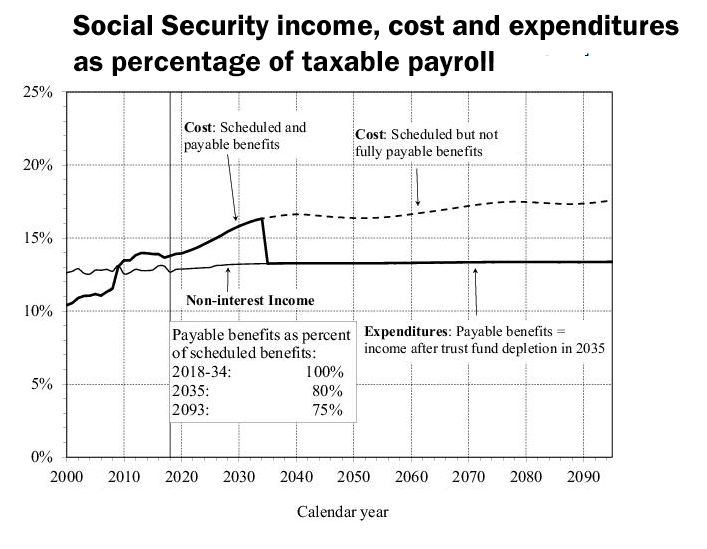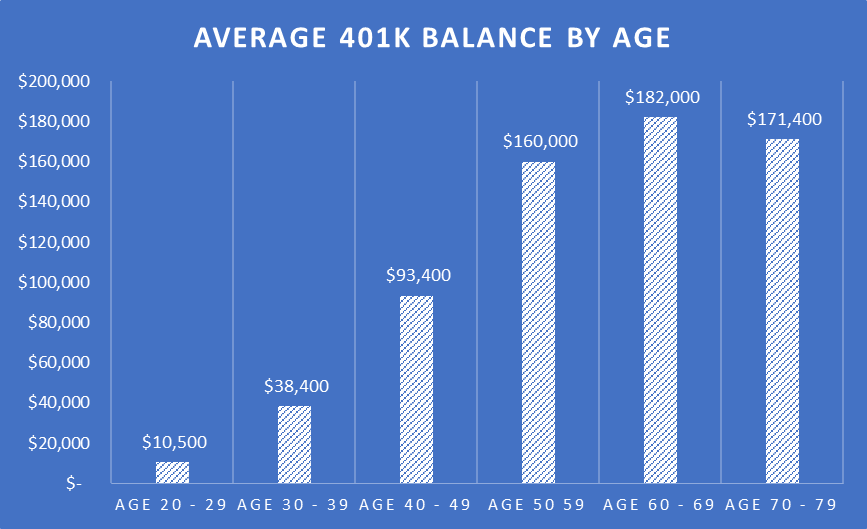
Planning for retirement requires that you save a certain portion of your income, before taxes. That range can vary from 5% to 15% of your income. However, it is not necessary to save the full amount. It is best to start with a lower percentage and increase your savings rate gradually by 1% each year. This way, you won't be missing the extra money from your paycheck.
4%
The 4% rule is a popular way to estimate how much money you need to save for retirement. It has some limitations. It assumes that your expenditures will increase annually by 4.4%. This may not hold in the real world. It assumes that your income will increase at the same rate of inflation.
15%
Many believe that a certain amount of income should be used to fund retirement. The exact number will depend on many factors. Typically, a person should set aside between 15 and 20 percent of his or her income. The sooner someone starts saving, then the better.

Seven times
You must think about your future needs before you start saving for retirement. By age 55, you should have saved seven times your annual income. Your savings will grow faster if you start saving early for retirement. Fidelity recommends starting to save as early as you can. One-third of your annual income should be saved by the age of 30, two-thirds at age 35, four thirds by age 45 and seven times your salary by age 55. These funds should be saved in retirement savings accounts.
Eight times
Many financial experts recommend that you contribute at least eightfold of your annual income to your retirement account. This is an ambitious goal but will allow you to have a great retirement. Fidelity Investments retirement calculator allows you to calculate how much money is needed.
Ten times
Ideally, you should have at least ten times your income saved up for retirement. This goal will provide financial security and freedom for your senior years. However, calculating this figure is difficult, as the cost of retiring varies depending on several factors, including your health, lifestyle, and length of life. You should still be in good health if your investments are wise and you make a start early.
Fifty percent
Most people know that at least half of your income should be saved for retirement. But how much should you really save? This rule assumes that you started saving early in your career and that your retirement income will be between 55% and 80% of your pre-retirement income. This rule is not a guarantee that you will reach your retirement goals.

Twenty percent
How much of your income you put aside for retirement is dependent on your decisions before and after retirement. Consider how much income you receive from other sources. But saving early for retirement can be one of the best things you can do. This will give you more time to grow your money and invest it. It's easier to recover from a downturn if you begin saving early.
Thirty-five percent
Although it is hard to predict what you will need to retire, it is a good idea to save thirty percent of your annual income. You will need to save a different amount depending on your financial situation, age, and other factors. To determine how much to save, you can use historical data. For young people, you can benefit from company match-ups which will allow you to save even more. To take advantage of the matched contributions, you should start saving as soon as possible. Also, create a college savings fund to prevent your retirement account from being raided to pay college.
Twenty-five percent
As a general rule, 25 percent of your income should go towards retirement. The sooner you achieve this goal, the better. It will allow you more flexibility and enable you to retire sooner if your savings are sufficient.
FAQ
What are some of the different types of investments that can be used to build wealth?
There are many types of investments that can be used to build wealth. Here are some examples:
-
Stocks & Bonds
-
Mutual Funds
-
Real Estate
-
Gold
-
Other Assets
Each has its own advantages and disadvantages. Stocks or bonds are relatively easy to understand and control. They can fluctuate in price over time and need active management. However, real estate tends be more stable than mutual funds and gold.
It's all about finding the right thing for you. Before you can choose the right type of investment, it is essential to assess your risk tolerance and income needs.
Once you've decided on what type of asset you would like to invest in, you can move forward and talk to a financial planner or wealth manager about choosing the right one for you.
Who should use a Wealth Manager
Anyone who wants to build their wealth needs to understand the risks involved.
It is possible that people who are unfamiliar with investing may not fully understand the concept risk. Poor investment decisions could result in them losing their money.
It's the same for those already wealthy. It's possible for them to feel that they have enough money to last a lifetime. But this isn't always true, and they could lose everything if they aren't careful.
Every person must consider their personal circumstances before deciding whether or not to use a wealth manager.
What is estate planning?
Estate Planning is the process of preparing for death by creating an estate plan which includes documents such as wills, trusts, powers of attorney, health care directives, etc. These documents will ensure that your assets are managed after your death.
Statistics
- US resident who opens a new IBKR Pro individual or joint account receives a 0.25% rate reduction on margin loans. (nerdwallet.com)
- According to a 2017 study, the average rate of return for real estate over a roughly 150-year period was around eight percent. (fortunebuilders.com)
- These rates generally reside somewhere around 1% of AUM annually, though rates usually drop as you invest more with the firm. (yahoo.com)
- Newer, fully-automated Roboadvisor platforms intended as wealth management tools for ordinary individuals often charge far less than 1% per year of AUM and come with low minimum account balances to get started. (investopedia.com)
External Links
How To
How to Invest your Savings to Make Money
You can get returns on your capital by investing in stock markets, mutual funds, bonds or real estate. This is called investing. It is important that you understand that investing doesn't guarantee a profit. However, it can increase your chances of earning profits. There are many different ways to invest savings. You can invest your savings in stocks, mutual funds, gold, commodities, real estate, bonds, stock, ETFs, or other exchange traded funds. These methods will be discussed below.
Stock Market
Because you can buy shares of companies that offer products or services similar to your own, the stock market is a popular way to invest your savings. Buying stocks also offers diversification which helps protect against financial loss. In the event that oil prices fall dramatically, you may be able to sell shares in your energy company and purchase shares in a company making something else.
Mutual Fund
A mutual fund refers to a group of individuals or institutions that invest in securities. They are professionally managed pools of equity, debt, or hybrid securities. A mutual fund's investment objectives are often determined by the board of directors.
Gold
The long-term value of gold has been demonstrated to be stable and it is often considered an economic safety net during times of uncertainty. It can also be used in certain countries as a currency. Due to investors looking for protection from inflation, gold prices have increased significantly in recent years. The price of gold tends to rise and fall based on supply and demand fundamentals.
Real Estate
Real estate refers to land and buildings. When you buy real estate, you own the property and all rights associated with ownership. To generate additional income, you may rent out a part of your house. The home could be used as collateral to obtain loans. The home can also be used as collateral for loans. Before purchasing any type or property, however, you should consider the following: size, condition, age, and location.
Commodity
Commodities are raw materials like metals, grains, and agricultural goods. As these items increase in value, so make commodity-related investments. Investors who want the opportunity to profit from this trend should learn how to analyze charts, graphs, identify trends, determine the best entry points for their portfolios, and to interpret charts and graphs.
Bonds
BONDS are loans between governments and corporations. A bond is a loan in which both the principal and interest are repaid at a specific date. Bond prices move up when interest rates go down and vice versa. An investor buys a bond to earn interest while waiting for the borrower to pay back the principal.
Stocks
STOCKS INVOLVE SHARES in a corporation. Shares represent a small fraction of ownership in businesses. If you own 100 shares of XYZ Corp., you are a shareholder, and you get to vote on matters affecting the company. Dividends are also paid out to shareholders when the company makes profits. Dividends are cash distributions paid out to shareholders.
ETFs
An Exchange Traded Fund, also known as an ETF, is a security that tracks a specific index of stocks and bonds, currencies or commodities. ETFs trade in the same way as stocks on public exchanges as traditional mutual funds. The iShares Core S&P 500 Exchange Tradeable Fund (NYSEARCA : SPY) tracks the performance of Standard & Poor’s 500 Index. This means that if SPY is purchased, your portfolio will reflect the S&P 500 performance.
Venture Capital
Venture capital is private funding that venture capitalists provide to entrepreneurs in order to help them start new companies. Venture capitalists provide financing to startups with little or no revenue and a high risk of failure. They invest in early stage companies, such those just starting out, and are often very profitable.